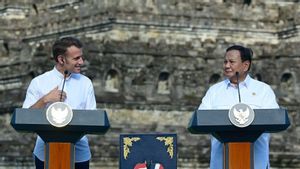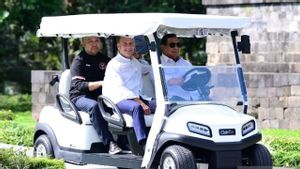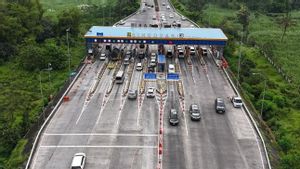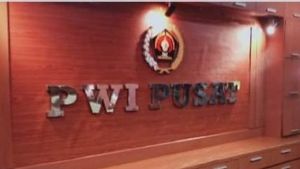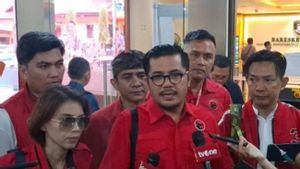JAKARTA - The DKI Jakarta Provincial Government has returned the frequency intensity of mass transportation services such as TransJakarta, MRT and LRT to normal. Previously, DKI Governor Anies Baswedan restricted services to prevent the spread of the corona virus.
Even though the frequency intensity has been restored, the DKI Provincial Government has limited its passenger capacity to half the maximum number of passengers in one bus or train carriage. Passengers are also asked to maintain a safe distance when using public transportation.
Head of the DKI Jakarta Transportation Agency, Syafrin Liputo, asked the public to maintain the distance between passengers, starting from queuing for public transport by doing front speed.
"Because we hope that those who will enter the bus stop or station are in accordance with the total capacity of the fleet, we will keep our distance from the fast forward position," said Syafrin at the DKI City Hall, Monday, March 16 evening.

This passenger row pattern is done by raising your arms straight forward to make a distance from the passengers in front of them, when they are about to enter bus stops and stations.
With this position, Syafrin hopes that the potential spread of the virus originating from the city of Wuhan, China, can be minimized, even eliminated.
"We are also preparing officers from the Department of Transportation and Satpol PP, starting to make arrangements for the people who will queue at the bus stops and at the station," said Syafrin.

Meanwhile, DKI Jakarta Governor Anies Baswedan said that this queuing pattern was the result of discussions with experts. The goal is to reduce the level of risk of transmission during queues or congestion in confined spaces.
"Therefore, limiting the number of passengers per car and per bus is very important to ensure that the physical distance between one passenger and another passenger," said Anies.
Anies also appealed to companies to prioritize managing the work of employees remotely or working from home. This is in line with President Joko Widodo's direction.
"We hope that in Jakarta, as the center of Indonesia's economy, this social distancing activity on the one hand will be able to maintain the potential for transmission but can continue to be productive in a long distance," said Anies.
For information, in returning the frequency of transportation, there are restrictions on passenger capacity on each TransJakarta bus and MRT and LRT train cars. At the MRT, each series of carriages is filled with a maximum of 360 passengers, out of a capacity of 1,200 passengers.

Meanwhile, LRT is limited to 80 passengers, from a maximum capacity of 270 passengers per series of carriages. Then, TransJakarta is limited to a total of 60 passengers in articulated buses, from a maximum capacity of 150, as well as 30 passengers on a single bus of a capacity of 80 passengers.
Transjakarta operates 123 routes from 05.00-22.00 WIB for regular services, and runs 11 routes for Night Fleet Service (Amari) from 22.00-05.00 WIB.
The number of operating routes will undergo an adjustment, with details of 15 BRT routes in the corridor, 25 integrated public transport routes in the city, 4 RoyalTrans routes, 10 Transjabodetabek routes, and 69 Mikrotrans routes.
To ensure social distancing is maintained, and prevent too long congestion at the bus stops, the frequency and number of buses operating on each route will be increased to 2 times the normal frequency.
The DKI Provincial Government has also allocated 60 school buses that serve passengers from a number of Rusunawa, while all schools are closed. The bus operates from 05.00 - 21.00 WIB.
Buses operate in 19 rusunawa, including Rawa Bebek, Komarudin, Pinus Elok, Pulogebang, Cakung KM 2, Pondok Bambu, Cipinang Muara, Jatinegara Kaum, Cibesel, Marunda, Sukapura, Albo, Jatirawasari, Pesakih, Flamboyan, Kapuk, Tambora, Reservoir Pluit, and Tanah Merah.
The English, Chinese, Japanese, Arabic, and French versions are automatically generated by the AI. So there may still be inaccuracies in translating, please always see Indonesian as our main language. (system supported by DigitalSiber.id)





